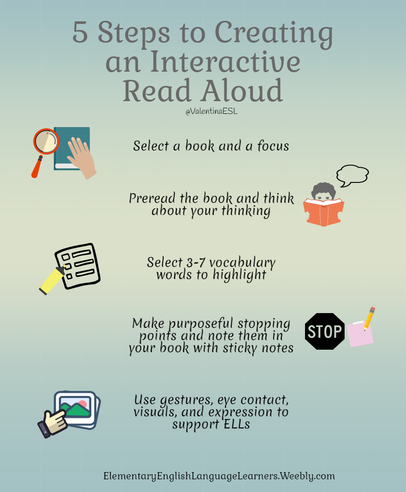|
RELATIONSHIPS
Building a relationship takes time as well as tons of effort. Being intentional about building a relationship is important. Mindfully going into co-teaching will benefit both teachers and the students. Some people are not naturally comfortable with having another person in their classroom, so easing into co-teaching may be necessary. To begin with, meet ahead of the year and get to know as much as possible about one another. In my experience, there have been teachers who are more open to sharing and others who are less. That's okay! As long as your co-teacher knows you care and you are interested, that's a start. Do you remember when you were in school and your teacher said it was time for read aloud? I don't know about you, but for me, that was a joyous time. It was a time for my imagination to soar. I could take the words that were flowing so eloquently from her mouth and create a movie in my mind. I love it. As a classroom teacher, reading aloud to my own students became my favorite thing to do (maybe because it was magical for me as a child). I wanted to share that experience with them. But I also wanted to lift the level of learning a notch. Rather than this time being only for input, I was hoping to create some opportunities for output as well. ENTER Interactive Read Alouds! In a traditional read aloud, the experience is a one way street. The teacher reads and the students listen. There is no interaction, discussion, or time for students to express themselves during the read aloud. It's probably what I disliked most about read aloud when I was a kid. No one was allowed to talk while the teacher read. On the contrary, during an Interactive Read Aloud, the teacher provides ample opportunities for students to interact with the text. Students talk with a partner, act out parts of the book, draw a picture related to the reading, or respond in writing. The best Interactive Read Alouds are carefully pre-planned by the teacher. The teacher can stop to ask questions or have students respond at critical parts of the book when the planning is done ahead of time. The term interactive refers to the active learning that occurs while reading aloud high-quality literature. It characterizes the teacher and students having a conversation as they process the text together. It provides students an opportunity to extend their understandings through talk. This talk provides evidence of their thinking. (Fountas & Pinnell, 2001, 2011) In both cases, whether traditional read aloud or interactive, the teacher models proficient reading so students can hear what an expert reader sounds like and how a reader engages with text. The teacher also models thinking about the text. What is happening? What is the character doing and why? What am thinking now? Basically, students get to hear what happens in the reader's head. They are also able to experience a text that is at a higher level than they are capable of reading on their own. Steps to creating your own Interactive Read Aloud: •Select a book and a focus •Preread the book and think about your thinking •Select 3-7 vocabulary words or phrases to highlight •Make purposeful stopping points and note them in your book with a sticky note •Use gestures, eye contact, visuals and expression to support ELLs In this video, Linda Hoyt explicitly demonstrates with students how to talk to your Thinking Partner while she shares an Interactive Read Aloud on a nonfiction book. (5 minute clip) https://www.youtube.com/watch?v=qYoeVkf3s7E The value of a read aloud, whether it be interactive or not, cannot be underestimated. Children of all ages benefit from being read to regularly. I'm an advocate for daily! This TED Talk by Rebecca Bellingham speaks volumes about the benefit of reading aloud. If you have 9 1/2 minutes to spare, watch it and then share it with teachers and parents! We all need a reminder every now and then. Research has demonstrated that the most effective read-alouds are those in which children are actively involved asking and answering questions and making predictions rather than passively listening (Dickinson, 2001).  Resources: Calkins, L. (2015). Units of study for teaching reading. Portsmouth, NH: Heinemann. Hoyt, L. (2007). Interactive read-alouds. linking standards, fluency, and comprehension. Portsmouth, NH: First Hand Heinemann. Social studies is a content area filled with domain specific vocabulary. It is generally content that is specific to the area or region where we live/teach. For example, in Texas, students learn a lot about Texas. They learn about the geography and history, economics, etc. Yes, of course they also learn about the United States too. But in Italy or Columbia, they may not be learning all about Texas or even too much about the United States. They learn about their country's geography, history and economics, etc. They explore historical figures that are important to their country. So when a student (especially in older grades) comes to America, they may be missing key parts of social studies that we expect our students to have.
|
Categories
All
|





 RSS Feed
RSS Feed
